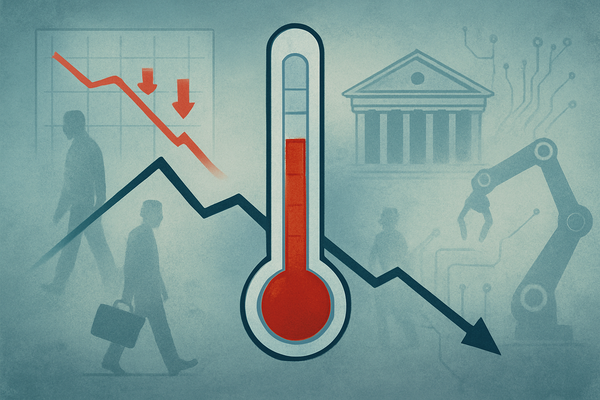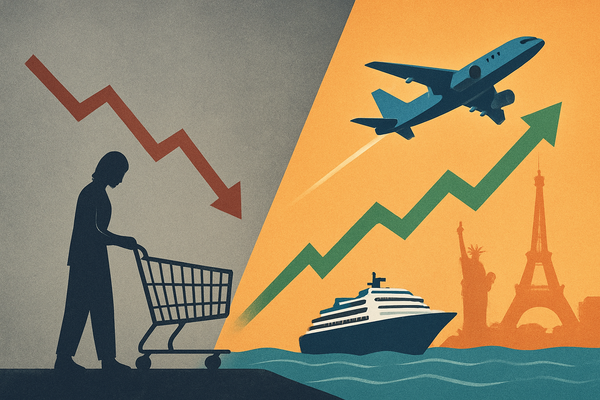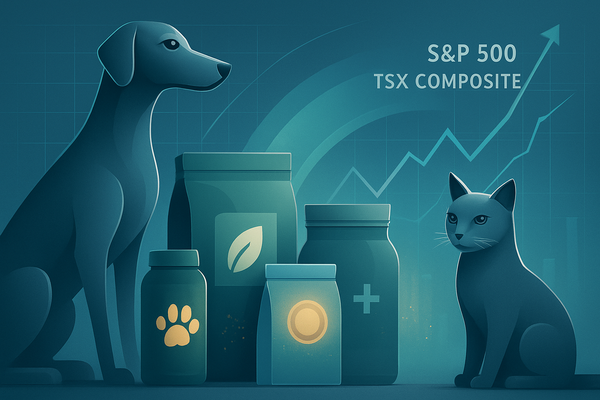UN Sounds Alarm: Global Food Prices to Remain Stubbornly High in 2025, Threatening Worldwide Food Security

The United Nations has issued a stark warning that global food prices are projected to remain persistently high throughout 2025, a troubling forecast that casts a long shadow over worldwide food security. This enduring inflationary pressure on essential commodities is attributed to a confluence of factors, primarily entrenched supply chain disruptions and the escalating impact of climate change. The grim outlook suggests a continued erosion of purchasing power for vulnerable populations, deepening food insecurity, and exacerbating malnutrition, particularly in low-income nations already grappling with economic fragilities.
As of November 2025, while the FAO Food Price Index has shown some recent monthly declines, the underlying structural issues highlighted by various UN bodies earlier in the year continue to fuel market volatility and maintain prices at elevated levels compared to pre-crisis periods. This sustained high cost of food threatens to push millions more into acute hunger, demanding urgent and coordinated global responses to avert a deepening humanitarian crisis and stabilize agricultural markets.
A Perfect Storm: Geopolitics, Climate, and Economics Drive Unprecedented Food Inflation
The UN's dire prognosis for 2025 stems from a "perfect storm" of interconnected global crises that have been brewing for several years. The initial inflationary pressures, ignited by the COVID-19 pandemic and its ripple effects on demand and supply chains, were severely amplified by the war in Ukraine. This conflict drastically disrupted the global flow of critical commodities such as wheat, sunflower oil, and fertilizers, leading to soaring fuel and agricultural input costs. While some export restrictions related to the conflict have seen slight easing by late 2025, the market remains acutely sensitive to ongoing geopolitical tensions and trade policy decisions. Beyond Ukraine, ongoing conflicts in regions like Eastern Africa and Gaza continue to inflict severe localized impacts, creating regional food shortages and driving acute price spikes.
Compounding these geopolitical and logistical challenges are persistent economic shocks. Unprecedented fiscal spending and relaxed monetary policies in previous years contributed to a demand-driven inflation that subsequently transitioned into a more stubborn supply-driven inflation. High costs for agricultural inputs, particularly fertilizers and energy, remain a significant burden for farmers globally, directly translating into higher food prices.
However, the most formidable long-term driver identified by UN bodies, including the Food and Agriculture Organization (FAO), is undoubtedly climate change. Increasingly frequent and intense climate shocks—ranging from devastating droughts and floods to severe heatwaves—are consistently leading to widespread crop failures, reduced yields, and significant disruptions to agricultural production in key food-producing regions. For instance, a heatwave in Ghana and Ivory Coast earlier in 2024 contributed to a staggering 300% increase in global cocoa prices. Similarly, an 80% jump in Indian onion and potato prices followed a 2024 heatwave, and European olive oil prices surged by 50% due to prolonged droughts in Italy and Spain in 2022-2023. Experts predict that such extreme weather events will continue to cause sudden price spikes for commodities like coffee and cocoa in 2025. The International Monetary Fund (IMF) specifically warned in October 2025 that a likely strengthening of the La Niña weather phenomenon in the fourth quarter could reverse any downward trends in food prices, triggering new weather anomalies in crucial agricultural zones.
The SOFI 2025 report (The State of Food Security and Nutrition in the World), published in July by the FAO, IFAD, UNICEF, WFP, and WHO, highlighted how this combination of factors drove dramatic increases in food prices between 2020 and 2024. The Global Report on Food Crises (GRFC) 2025, updated in September, further underscored that conflict, economic shocks, climate extremes, and forced displacement continue to be the primary drivers of acute food insecurity globally. It revealed that over 295 million people across 53 countries faced high levels of acute food insecurity in 2024, with preliminary data for 2025 projecting more than 231 million people will remain at high risk, with famine conditions confirmed in parts of Sudan and a significant portion of the Gaza Strip population at risk.
Market Movers: Winners and Losers in a Volatile Food Landscape
The persistently high global food prices forecast for 2025 will undoubtedly create a bifurcated market, producing both winners and losers among public companies. Agricultural giants and some food producers with diversified supply chains and strong financial hedging capabilities may find themselves in a relatively advantageous position, while others, particularly those reliant on volatile commodity imports or with thin margins, will face significant headwinds.
Potential Winners:
- Large-scale Agricultural Producers and Input Suppliers: Companies like Archer-Daniels-Midland (NYSE: ADM), Bunge Global SA (NYSE: BG), and Cargill (Private), which are major players in grain trading, processing, and agricultural services, could benefit from higher commodity prices, especially if they have strong inventory management and hedging strategies. Similarly, agricultural input companies such as Corteva, Inc. (NYSE: CTVA) and Nutrien Ltd. (TSX: NTR), which supply fertilizers, seeds, and crop protection products, may see increased revenue from elevated input costs, although demand might be affected by farmers' ability to pay.
- Agricultural Technology (Agri-Tech) Companies: Businesses offering solutions for climate resilience, precision agriculture, and supply chain optimization could see increased adoption. Companies developing drought-resistant crops, water-saving irrigation systems, or AI-powered yield forecasting may experience higher demand as farmers seek to mitigate climate risks and improve efficiency.
- Companies with Strong Local Supply Chains and Vertical Integration: Food companies that have invested in localized sourcing or possess significant vertical integration, reducing their reliance on complex global supply chains, may gain a competitive advantage. This could include some regional food processors or retailers that have developed robust relationships with local farmers.
Potential Losers:
- Food Processors and Retailers with Thin Margins: Many food processing companies and grocery retailers operate on tight margins. Higher raw material costs, coupled with consumer resistance to price increases, will squeeze profitability. Companies like Kraft Heinz Company (NASDAQ: KHC) or General Mills, Inc. (NYSE: GIS), while large, will face immense pressure to pass on costs without alienating consumers, potentially leading to reduced sales volumes.
- Restaurants and Foodservice Providers: The restaurant industry, already recovering from pandemic-related challenges, will face rising ingredient costs. This could force menu price increases, impacting consumer demand, or lead to reduced portion sizes and lower quality ingredients to maintain profitability.
- Companies Heavily Reliant on Imported Commodities: Businesses that depend on specific imported commodities, especially those susceptible to climate shocks (e.g., coffee, cocoa, olive oil), will be exposed to extreme price volatility. This could include chocolate manufacturers, coffee roasters, and certain specialty food producers.
- Airlines and Logistics Companies (Indirectly): While not direct food companies, rising fuel costs, exacerbated by geopolitical events and their impact on global energy markets, will continue to affect the operational expenses of logistics and transportation firms, indirectly contributing to higher food distribution costs.
The ability of these companies to adapt to volatile commodity markets, manage supply chain risks, and innovate with climate-resilient solutions will be crucial in determining their financial performance in 2025 and beyond.
Wider Significance: A New Era of Food Volatility
The UN's warning about persistently high global food prices in 2025 is not an isolated event but rather a stark indicator of a new and challenging era for global food systems. This situation fits squarely into broader industry trends characterized by increasing vulnerability to external shocks, the undeniable impact of climate change on agriculture, and the growing recognition of food security as a critical national and international security concern. The intertwining of geopolitical instability, economic headwinds, and environmental degradation creates a complex web of challenges that will have far-reaching ripple effects.
The potential ripple effects on competitors and partners are significant. For instance, countries heavily reliant on food imports, particularly in Africa and Western Asia, will face severe balance of payments issues and increased social unrest as food becomes unaffordable. This, in turn, could strain international aid budgets and diplomatic relations. Furthermore, the volatility could accelerate the trend towards protectionist agricultural policies, with more nations seeking to bolster domestic food production and potentially imposing export restrictions, further exacerbating global supply issues.
Regulatory and policy implications are profound. International bodies and national governments are under increasing pressure to develop more resilient food systems. This includes calls for targeted fiscal support for vulnerable populations, more effective social protection measures, and coordinated efforts to avoid trade disruptions. The SOFI 2025 report specifically outlined policy prescriptions focusing on market transparency and strengthening institutional preparedness for future crises. Central banks globally are also beginning to factor climate change into their inflation models, with some projections suggesting global warming could add up to 3 percentage points to annual food inflation by 2035. This could lead to shifts in monetary policy frameworks, potentially including more flexible inflation targets to accommodate climate-induced supply shocks.
Historically, periods of high food prices have often coincided with social unrest and political instability. The food price spikes of 2007-2008 and 2010-2011, for example, were significant contributing factors to the Arab Spring uprisings. While the current situation has different drivers, the comparison highlights the severe societal consequences of sustained food unaffordability. The current context, however, is arguably more complex, with the added layer of undeniable climate change impacts making the challenge more systemic and long-term.
What Comes Next: Adaptation and Innovation Imperative
Looking ahead, the persistently high global food prices anticipated for 2025 necessitate immediate adaptation and strategic pivots across the entire food value chain. In the short term, humanitarian aid organizations and governments will face immense pressure to scale up food assistance programs and implement emergency social safety nets to prevent widespread famine and malnutrition. The World Food Programme (WFP) and other aid agencies will continue to be at the forefront of these efforts, often operating in challenging and conflict-affected environments.
In the long term, a fundamental reimagining of global food systems is required. This includes significant investments in climate-resilient agriculture, such as developing new crop varieties, improving water management techniques, and promoting sustainable farming practices. Diversifying food sources and reducing reliance on a few key agricultural regions will also be crucial. Furthermore, strengthening global supply chain infrastructure, reducing food waste, and fostering greater international cooperation on trade policies will be essential to build resilience against future shocks.
Market opportunities will emerge for companies and innovators focused on these solutions. Agri-tech firms specializing in precision agriculture, vertical farming, alternative proteins, and advanced logistics stand to gain as stakeholders seek innovative ways to produce food more efficiently and sustainably. Challenges will include securing adequate funding for these transitions, overcoming policy inertia, and ensuring equitable access to new technologies, particularly for smallholder farmers in developing countries. Potential scenarios range from a gradual stabilization of prices through concerted global efforts and technological advancements, to a more pessimistic outlook where escalating climate impacts and geopolitical fragmentation lead to sustained food crises and increased humanitarian emergencies.
Wrap-Up: Navigating a New Reality for Global Food Security
The UN's warning regarding persistently high global food prices in 2025 serves as a critical wake-up call, underscoring that the era of relatively stable and affordable food may be behind us. The confluence of entrenched supply chain vulnerabilities, exacerbated by ongoing geopolitical conflicts, and the accelerating impacts of climate change has created a "new normal" of volatility in food markets. The key takeaway is that these are not transient issues but rather systemic challenges that demand comprehensive, long-term strategies.
Moving forward, the market will be characterized by increased price fluctuations, regional disparities in food availability, and heightened consumer awareness of food origins and sustainability. Investors should watch for companies demonstrating strong resilience through diversified operations, robust risk management strategies, and a clear commitment to sustainable and climate-smart agricultural practices. Those investing in agri-tech, localized food systems, and solutions that enhance supply chain transparency and efficiency are likely to be better positioned.
Ultimately, the significance of this warning extends beyond financial markets; it speaks to the fundamental human right to food and the stability of societies worldwide. The lasting impact will be a global imperative to rethink how food is produced, distributed, and consumed, with a renewed focus on building resilient, equitable, and sustainable food systems for the future. The coming months will be crucial in determining whether the world can collectively rise to this challenge or succumb to the growing pressures on global food security.
This content is intended for informational purposes only and is not financial advice



